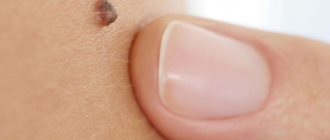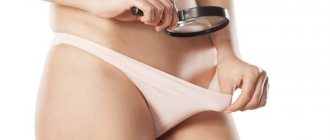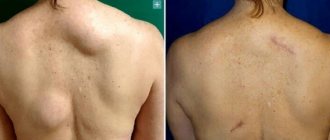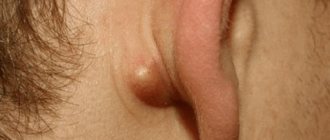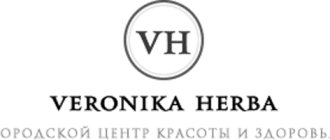What does a laser-removed tattoo look like: does it just fade a little or does white spots or edging appear on it? Are scars a mandatory component of the procedure or can you do without them?
Let's consider how the tattoo area should behave normally after laser treatment, whether it can darken, or even completely change color. Let's talk about what to do if your skin already has a scar from unsuccessful tattoo removal.
Why did the swelling appear?
Swelling after laser tattoo removal of the eyelids or eyebrows is a common reaction of the body and usually goes away the next day. Redness and mild swelling are considered a normal response of the epidermis and immune system when exposed to radiation. This complication is caused by an allergy to the anesthetic cream, as well as high skin sensitivity.
Swelling is common after laser eyebrow tattoo removal. If the inflammation is severe and lasts for four days or more, you should consult a doctor.
The treated area may swell due to an infection acquired during or after the session.
What happens during laser tattoo removal
Laser energy is very powerful. Once on the skin, it is absorbed by certain cells. If a laser pulse lasts a few billionths of a second (that is, a nanosecond), it heats up the molecules that absorb it and explodes them. A microexplosion changes the state of gases dissolved in cells and intercellular substance: oxygen, nitrogen, CO2. They temporarily turn into a gaseous state, becoming bubbles, and then burst. This crushes the tattoo pigment into small particles, and they are safely removed by the lymphatic system.
The appearance of bubbles above the tattoo forms a kind of opaque shield, as a result of which the tattoo fades for 5-10 minutes. After this time, the vacuoles burst and the tattoo darkens again. Sometimes it may even become brighter than before, and this is a normal reaction.
Tattoos removed by laser cannot be returned. If pigment particles are captured by immune cells and removed by lymph, they cannot return to the skin.
What should you be wary of when removing a tattoo?
When set correctly, the laser beam does not heat the skin so much as to cause a burn, which will then turn into a scar. Only swelling and redness will occur and should subside within a short period of time.
You can immediately understand whether a scar will remain after laser tattoo removal. If at the end of the procedure the skin turns pale, the likelihood of scar formation is high.
The following signs indicate that the procedure took place without trauma to the skin:
- the tattoo has changed in color;
- A few minutes after the procedure, the skin became slightly swollen and red.
If you see such changes, do not insist that the specialist continue the procedure. Even if the pigment has changed color dramatically (a red dye containing iron oxide can do this), this is not a reason to prolong the laser treatment session. With subsequent procedures, the brightness of the pigment will decrease.
After laser treatment, the tattoo should gradually fade. There should be no scars or hemorrhages in the skin after the procedure.
In fact, not all lasers are equally dangerous. Most often, scars remain after using nanosecond alexandrite and ruby devices, since they are quite difficult to set up.
What to do if your tattoo is healing too slowly
Each person, due to physiological characteristics, experiences the healing process of a tattoo differently. In due course, the inflamed wound will hurt. The recovery time for the skin is relative - it can take from 2 to 6 weeks.
The client needs to analyze whether there are reasons that prevent proper healing. Perhaps an excessive amount of ointment is applied, which prevents oxygen from entering, or the person constantly covers the tattoo with thick clothing. Even a long shower causes the crust on the tattoo to swell, which is why the inflammation stage lasts a long time.
The problem may be that a person takes medications or drinks alcohol, and the body’s protective functions are disrupted.
Signs of complications and methods of treatment
There are cases when the healing of a tattoo provokes other diseases. An open wound is a gateway for germs, which is why it is so important to treat and disinfect a new tattoo.
You should be concerned if the following symptoms are absent:
- bleeding (this does not mean the release of ichor, but blood);
- increase in the volume of the area of inflammation;
- the appearance of an allergic reaction;
- formation of suppuration.
In all of the above cases, you should contact a dermatologist and be sure to inform the tattoo artist about this.
Basic rules for tattoo removal - factors influencing effectiveness
All tattoos can be removed one way or another. The only question is how successfully the tattoo will be removed and what consequences this process will entail.
There are several factors that influence the success of a tattoo:
- Tattoo age.
- Color of the skin.
- Tattoo location.
- Tattoo color.
- The human body's ability to regenerate.
The easiest way to remove tattoos is for people with fair skin. Tattoos are best removed on places such as the arms, legs, chest and buttocks. The easiest way would be to remove a fresh tattoo. By the way, you can also remove unsuccessfully performed eyebrow tattoos.
The complexity of the process also depends on the human body’s ability to regenerate and the color of the tattoo. The easiest way to create a monochromatic design is black, red, purple and dark blue.
Accordingly, a multi-colored old tattoo on dark skin will be difficult to remove.
If there is a scar on the skin from unsuccessful tattoo removal?
There are cases when, after laser exposure, a scar remains on the skin filled with pigment from a former tattoo. Picosure allows you to remove this dye so that the scar takes on a natural color and becomes less noticeable. Moreover, the picosecond device will trigger the formation of new skin fibers, as a result of which the scar will become smoother and less noticeable.
Thus, the optimal way to remove a tattoo is a Picosure laser procedure. The device removes tattoos of any color and, in addition, promotes skin rejuvenation. Additionally, it can be used to reduce the severity of scars left after unsuccessful tattoo removal using another method.
Contraindications to laser removal
There are such prohibitions on this procedure:
- skin diseases (infectious and non-infectious);
- individual sensitivity to ultraviolet radiation - photosensitivity;
- fresh tan that is less than two weeks old;
- neoplasms - malignant and benign;
- pregnancy and breastfeeding;
- epilepsy;
- diabetes;
- keloid scars;
- acute infectious diseases.
The procedure is not performed on clients who have not reached the age of majority.
Content
- Laser operating principle
- How is this procedure carried out?
- Is it difficult to remove a tattoo?
- Are there any side effects?
- Cost of laser tattoo removal
- Contraindications to laser removal
- Benefits of laser tattoo removal
Previously, painful surgical methods, burning or liquid nitrogen were used to remove a tattoo, which led to the formation of scars that lasted a lifetime.
Today, salons in Kyiv and other cities of Ukraine offer a painless and non-traumatic method of getting rid of tattoos - laser removal.
How to take care of your skin so that crusts do not appear after tattooing
A crust on a tattoo is a natural wound healing process for any person, so it is impossible to exclude the formation of ichor.
To alleviate the condition, the following requirements should be observed:
- Protection. After the tattoo session, the artist applies a protective cream and seals the area with a special absorbent film. This compress should be removed within 2-6 hours.
- Proper healing. After removing the film, the tattoo can be washed with baby or antibacterial soap, but cannot be rubbed. Then, the area should be blotted with an absorbent napkin and a healing ointment should be applied. For 2-4 days, the tattoo should be treated regularly every 6-10 hours. To prevent the protruding mucus from sticking to the fabric of clothing, it is necessary to apply a special or baby diaper over the wound, which can be secured with a medical plaster or masking tape.
- Care during the regeneration stage. After the ichor layer has completely dried, there is no need to apply compresses; for 3 days it is enough to treat the tattoo with a healing ointment.
Compress for tattoo healing
During the recovery period, the skin peels off; you should not steam the wound at this time; you must wear loose clothing and avoid direct sunlight.
How is this procedure carried out?
Laser tattoo removal occurs in several stages.
First, the master examines the place where the procedure will be performed, assesses the area of work and determines the skin phototype.
The second stage is laser exposure. If necessary, the treated area is shaved before the procedure. The client is given glasses to protect their eyes from bright laser flashes.
The third and final stage is the application of a healing cream and further recommendations from the specialist.
The number of procedures performed depends on the color of the pigment and the depth of the dye.
After the procedure, proper care of the laser treatment site is necessary. For some time after laser removal sessions, you need to avoid visiting swimming pools, baths, saunas, and solariums. If crusts appear in this area, it is necessary to treat the skin with sunscreen.
Laser tattoo removal at ]ASA Laser Cosmetic (Kyiv)[/anchor]
Healing agents
During the first few days after the procedure, the crust on the tattoo needs special care. The specialist can recommend both pharmaceutical products and professional cosmetics. Medicines prevent the growth of bacteria and also promote wound healing.
Professional products alleviate the symptoms of inflammation, they create a protective film, but at the same time moisturize the skin, which eliminates the feeling of tightness. All products used have a safe composition; recommended drugs must be licensed.
Ointments
The most commonly prescribed drugs are Bepanten and Panthenol; there are also analogues Traumeel S and Solcoseryl. These anti-inflammatory drugs are applied in a thin layer to the skin, promoting its regeneration. To prevent infection, there are ointments based on the antibiotic batriacin, but they are used only on the recommendation of a specialist. The pharmacy can offer Baneocin ointment; it also contains Bacitracin.
When using healing ointments, the bark on the tattoo will quickly disappear
Professional ointments are not absorbed as quickly, which allows you to reduce the number of applications.
The most popular products in the tattoo industry:
- Dr. Pro;
- Tattoo Revive;
- Druid Tattoo healing balm;
- Tatoo Goo.
The composition of such drugs includes Chlorhexidine, Panthenol, vitamins, plant extracts and oils.
Healing film
Special films, thanks to their breathable structure, eliminate the need to wrap the skin with compresses, treat the wound with ointments and sprays, and regularly change bandages. The film is removed after the crust on the tattoo begins to come off naturally. Tattoo film has a breathable structure; the film itself does not have a healing effect; it provides protection to the wound from external irritants, thereby starting the process of natural skin regeneration.
The film is tightly fixed to the skin, it does not need to be changed for 5-6 days, and the transparent coating makes it possible to control the healing process. After removal, the skin also needs to be treated with anti-inflammatory agents for 3-4 days.
When using this method, the crust on the tattoo will be hidden under the adhesive sheet, which prevents moisture from entering and tissue friction. The film is removed after the crust on the tattoo begins to come off naturally. However, sometimes the wound heals unevenly, and some of the ichor may remain on the skin. The main task in this case is not to tear off this crust along with the film. You can remove it more delicately and gently after preliminary steaming the desired part of the body.
The main disadvantage of this method is the feeling of discomfort when removing it; the protective film has an adhesive backing. For wounds that have not healed sufficiently, the peeling process will be a little painful.
Popular types of films include:
- Suprasorb F;
- Tattoo Revive Protective Tattoo Film;
- EZ Derm Defender.
The listed products are sold both in rolls and cut-to-length. In the tattoo parlor, the artist will select the required volume of film. The use is not recommended for everyone; specialists often use this material for less voluminous and colored drawings. Due to the multi-color pigments, colors can be mixed under the film, which is not very aesthetically pleasing.
Special plasters
They are used only for attaching medicinal compresses during the healing period. As a separate method for healing the crust on tattoos, adhesive tape is not used, since due to the abundance of glue, the protective ichor layer can be torn off along with the patch.
Pros and cons of using lasers
In addition to laser removal, there are alternative methods.
A brief overview of the techniques allows you to evaluate the advantages of choosing a laser:
- Surgical removal. This is the most traumatic method, which is used only in emergency cases. To remove pigment, dissection of the skin is practiced.
- Chemical bleaching. An alternative to laser exposure, which involves the use of special bleaching ointments. On the one hand, the technique completely eliminates skin injury. On the other hand, it affects all systems of the body, as chemicals enter the blood and spread through the bloodstream.
- Nitrogen treatment. This is a kind of burning, which leads to necrosis of the top layer and further exfoliation. This method is considered relatively inexpensive, but one of the most painful.
Laser removal is a modern and effective technique that is suitable for those who decide to get rid of a tattoo. Possible side effects are associated with a violation of the technique of applying the original design or the use of low-quality coloring pigments. If the tattoo was done in a salon using good equipment, then laser removal in several sessions will lead to the complete disappearance of images from the surface of the skin.
Benefits of laser tattoo removal
The hardware method has become the most popular when removing old tattoos. Here are its advantages:
- Laser tattoo removal is a painless method and does not require local anesthesia. During the procedure, the client will only feel a tingling sensation at the site where the device is applied.
- Safety. Previously, surgical methods were used to remove tattoos, which left scars on the skin. Infectious complications also occurred. When using a laser, such complications are excluded.
- Fast recovery. After laser removal, the skin heals faster compared to surgical methods. The recovery period is no more than one week.
- Speed of the procedure – the procedure lasts 5-30 minutes.
Laser tattoo removal is the most modern and effective method that does not cause harm to health. Modern devices will help get rid of annoying patterns on the skin without leaving scars on it.
How a tattoo heals day by day with proper care
The type of care depends on what kind of compress was applied to the tattoo; if it is a healing film, then no manipulations are required for 5-6 days.
Main stages of healing:
| Stages | Duration | Peculiarities |
| Appearance of ichor | Observed for 1-2 days from the date of the procedure | This is a natural process; the resulting liquid may be transparent or mixed with colored pigment. |
| Formation of a protective crust | Lasts up to 4 days | It is strictly forbidden to pick or scratch this area. |
| Peeling | May last 5 to 10 days | The crust on the tattoo begins to gradually peel off. Regeneration is accompanied by slight itching. |
Once the scabs have completely disappeared, the tattoo is considered completely healed. If there are any remaining areas of inflammation, you should continue to treat the area with healing ointment or regularly moisten it with Chlorhexidine.
Miramistin is often prescribed as an antibacterial agent.
The worse the paint, the faster
Don’t think that after the first session you will get rid of the tattoo. To ensure that not a trace remains of the image, you will need from three to five procedures with an interval of thirty days (each will cost about 3,500 rubles). The number of sessions that the master will prescribe for you depends primarily on the paint driven under the skin. If you got a tattoo in a good salon, be prepared to spend a long time with the laser. Your guy, who impaled himself on a tiger in artisanal conditions with ink, was luckier in this case. It is much easier and faster to remove than professional paint. The color of your drawing is also important: black and blue paint are the easiest to destroy, red and orange are worse, and green paint is almost impossible to completely remove. For the future, take this into account and the next time you are planning to get a tattoo, avoid emerald and marsh shades. Don’t expect the final result to appear immediately after the last “laser” session ends. The skin needs at least six months to fully recover. After this, be sure that no one will guess that your shoulder was once decorated with a tattoo.
Is it difficult to remove a tattoo?
Tattoos with dark purple or black pigment are the fastest and easiest to remove. More procedures will be needed to remove tattoos with green, turquoise and multi-colored pigments.
The effectiveness of tattoo removal depends on the following factors:
- The pigment used to make a tattoo. Modern pigments are easier to remove.
- The depth to which the pigment was injected. The laser only affects the top layer of pigment. Once this layer is removed, the laser beam can affect the following ones. The deeper the tattoo pigment is injected, the more procedures need to be performed.
- The color that was used for the tattoo. The darker the color of the pigment, the faster and easier it will be removed. And vice versa, the lighter it is, the more procedures need to be performed. It is very difficult to remove pink, flesh, and blue tones using a laser.
- The client's skin color also affects the effectiveness of tattoo removal. If the skin is dark or tanned, then it will absorb more laser energy - accordingly it will be traumatic and less effective.
Before and after laser tattoo removal at the LazerA cosmetology center (Kyiv)
What does improper tattoo care lead to in the long-term prognosis?
Neglecting the rules of care leads to the fact that the crust formed on the tattoo will take much longer to come off.
Other consequences include:
- the appearance of scars and cicatrices;
- pigment rejection in the form of an allergic reaction;
- distortion of the picture, faded colors;
- formation of chronic skin diseases.
The causes of complications can be either neglect of the rules by the client or negligence of the master. Professionals must ensure the sterility of instruments and work only with high-quality materials. The crust that forms on a tattoo does not appear immediately, but the possible consequences should be notified during the procedure.
How can you remove a tattoo?
There are two methods: surgery and laser.
The surgical method is effective, but it may leave scars and is more suitable for small tattoos.
Laser is considered a safer method (read the US Department of Health study). But all sorts of creams and ointments are nonsense: their effectiveness has not been proven (here is a good article about this, albeit in English). Moreover, they can cause skin irritation and other unpleasant reactions.
Avoid the Chinese
Remember that the result depends not only on the color of your tattoo, but also on the device that will be used to remove it. The one made in the USA costs about a hundred thousand dollars. It is not surprising that many salons and medical centers do not buy expensive “Americans,” but their Chinese counterparts, whose price does not exceed four thousand bucks. But, unfortunately, budget “Asians” cope with the task much worse - after their exposure, the tattoo is “readable” on the skin: and even if it is barely noticeable, there can be no talk of ideal cleanliness and smoothness in this case. Therefore, before you give yourself into the hands of the first master you come across, be sure to ask him to show the documents for the device, where you can find out about the country of origin.
Can tattoos be removed with different lasers? Which is better?
To remove tattoos, you can use various lasers: dye lasers (PDL), neodymium, ruby, nanosecond alexandrite. Each of them has its own wavelength and therefore acts predominantly on pigments of a certain color.
For example, a ruby laser is better at removing blue, green, blue-black, black and violet colors, and it is important that the pigments lie closer to the surface of the skin. The neodymium Q-switched device reduces the brightness of red, orange, violet and blue-black pigments, but does not “see” blue and green colors at all. It turns out that if the tattoo is colored, then to remove it you will have to go to different salons or clinics, first checking what equipment they use?
Not necessary. Not long ago, a fundamentally new type of laser appeared – the Picosure picosecond alexandrite laser. The principle of its operation is a mechanical effect on the skin. The trillionth of a second pulses deliver energy so quickly that the atoms in the treated area of skin move apart, forming plasma bubbles. This breaks the pigment into smaller particles. For example, if after exposure to a Q-switched laser the pigment can be compared to small pebbles, then after PicoSure it will be crushed to the state of sand. Such particles are eliminated much faster by the lymphatic system, which means the result is achieved faster and easier.
Procedure using the Picosure device:
- requires 2-3 times fewer sessions for tattoo removal;
- lasts a short amount of time;
- less painful than with any other laser;
- has a short recovery period - several hours.
As a result of a completely different operating principle, the Picosure picosecond laser can remove pigment of any shade, including rare ones. Clinical studies have proven that Picosure can even remove tattoos that cannot be removed with other types of lasers.
Scars do not form after tattoo removal with a picosecond laser: the skin is not overheated or injured during the procedure.
Total
- A minimum of 4-5 sessions are required to remove a tattoo.
- Before the session you should not sunbathe or drink alcohol.
- The price for laser tattoo removal is from 500 rubles per square centimeter. The master will tell you the exact price during the consultation after he looks at the drawing.
- You don’t have to worry about disinfection and sterilization - we carefully monitor the processing of all instruments and do not allow dirt in the studio.
- Removing a tattoo is a little more painful than getting one.
- You can always not completely remove a tattoo, but only lighten it and paint it over with a new high-quality painting.
How does elimination work?
Briefly: the laser heats up the paint particles in the skin and destroys them.
Tattoo removal
Then the body gradually removes the destroyed small particles.
Detailed step by step:
- The master prepares the workplace.
- He puts special safety glasses on you.
- Treats the area of skin where the tattoo is tattooed.
- Turns on the laser and waits for it to heat up.
- Sets the laser power at which you will feel the least discomfort. With each subsequent session, the power will increase, since the removal occurs in layers, and each time the laser penetrates deeper.
- The laser passes over the entire surface of the tattoo. In the first sessions, strictly once on one area to avoid burns, and only in the last session twice, if required.
We use neodymium laser. It emits light waves of different lengths. This allows you to remove even deeply embedded pigment and different colors.
Laser tattoo removal

